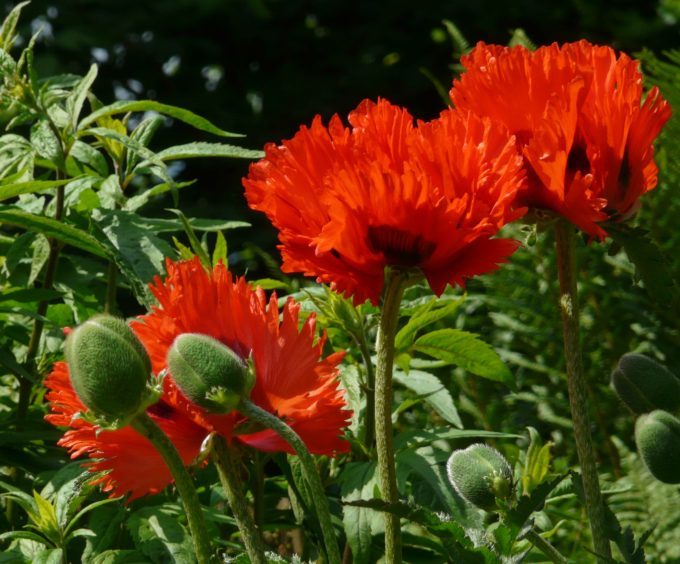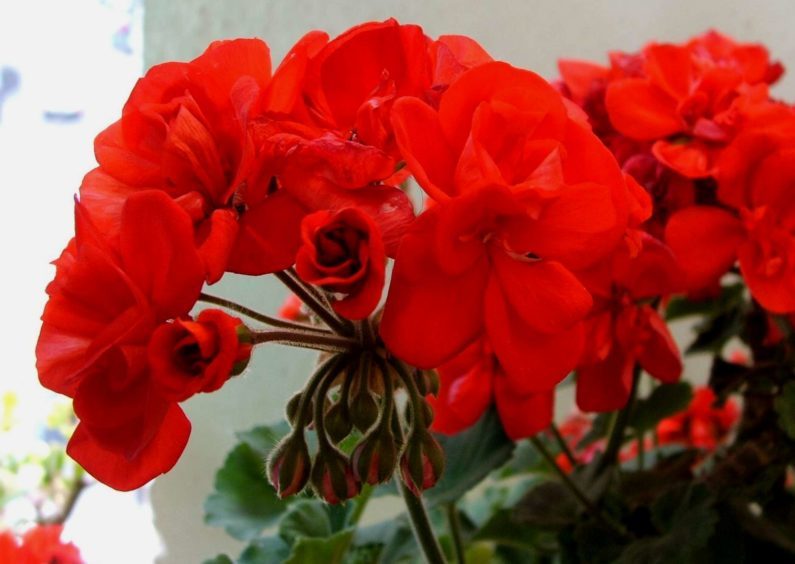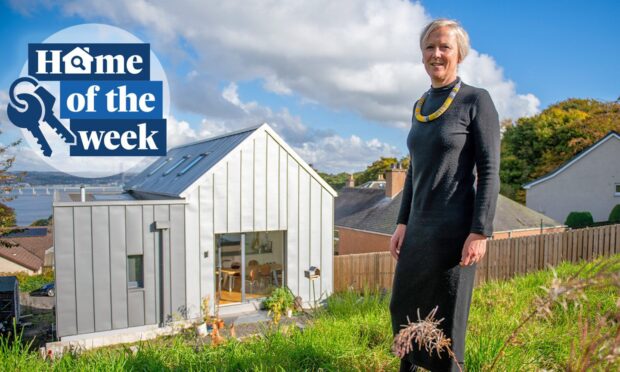There is always a place in most people’s garden for a few summer flowering annuals.
You could have a dedicated annual border to flower every year, or you could use annuals to fill in any gaps that always appear as we remove plants past their best, or where some plant has died out.
They are also invaluable in new built house gardens, to give colour and green plant cover to soil, while we take time to work out our garden landscape plan.
Soil on new built gardens is usually poor, but as long as you can get a good surface tilth for seed germination the plants will flower happily as they do not like a rich fertile soil.
However if the soil has a lot of clay in it add some old compost from growbags, tomato pots or some well rotted garden compost into the top few inches to aid germination.
If you wish to establish a permanent annual border choose a sunny site with well drained soil.
This can get dug over in late autumn after the last flowers have faded, the old plants removed and the bed tidied up removing any weeds.
Leave it rough over winter so the frosts can break down a large surface area of soil which will then be easy to rake over in spring.
Sowing and planting
Most plants can be sown direct into the soil, but there is nothing wrong with bringing on some early under glass to start the show sooner than those direct sown outdoors.
I often sow Livingston daisies, Cosmos, Osteospermums and Candytuft in the cold greenhouse in cellular trays to give plants an early start.
Outdoors the border just needs raking level and producing a good tilth to aid seed sowing which can start at the end of March to mid April direct onto the ground where they are to grow.
If your border is a fair size and you are growing a range of annuals it may be better to mark out drifts with sand then sow each type in rows in its own patch.
When these grow to a few inches they can be thinned and transplanted to where ever they are needed.
This method also makes weeding a lot easier.
It gives a more natural appearance when sowing or planting up drifts if the different plant types overlap to some degree.
A good range of annuals
There are so many different ones to choose from, that it is worth trying a few different ones each year to see which suits your tastes and location best.
Many half hardy bedding plants such as Impatiens, Petunias, Marigolds, Lobelia and Geraniums are treated as annuals, but these are best for traditional beds, tubs and hanging baskets, so I am concentrating on the hardy annuals usually sown direct onto the ground or raised for a few weeks in plug trays.
You can also buy a wide selection cheaply from your garden centre as plug plants.
Shirley poppies are a must as they are very easy to grow and colourful as well as Californian poppies and poppy Ladybird.
A gorgeous fully double pink poppy arrived as a stray weed in my garden, but put on such a fantastic show that I saved seed for future years.
It was a variety of the opium poppy Papaver somniferum, so I just let it go to seed and then see what comes up the next year.
Godetia, Livingston daisies, Osteospermums and Candytuft are very showy at the front of borders and Clarkia, Cosmos, Cornflower, Nigella, Larkspur and Amaranthus better at the back.
Calendula and Nasturtiums are easy and give a great show, but keep them dead headed as if left unattended they can become very invasive in the following years as the seed remains viable.
Wee jobs to do this week
Give fruit trees, (apples, pears, plums, cherries) and bushes such as raspberries, currants, gooseberries and saskatoons a spring feed with a general fertiliser to boost growth.
This also strengthens flower clusters and aids fertilisation.
You can follow this with a mulch of well rotted compost to keep weeds down, preserve moisture and once the mulch rots down it will add humus to the soil.
Strawberries are best left unfertilised otherwise it might boost excess growth at expense of fruiting and do not mulch as they will get a layer of straw between the rows to prevent soil splashing onto the fruit.
















